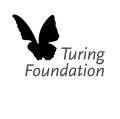The American artist Alexander Calder (1898-1976) was one of the great innovators in modern art and a pioneer of kinetic art. He was the first to take sculptures from their pedestals, suspending them in mid-air. Included in the exhibition are his iconic mobiles and stabiles, as well as motorized and sonorous sculptures. Light and reflection, sound, ephemera, gravity and architecture: these are important themes from Calder’s oeuvre that are echoed in the work of the artists of today.
The works of the renowned artists Olafur Eliasson, Žilvinas Kempinas, Simone Leigh, Ernesto Neto, Carsten Nicolai, Roman Signer, Aki Sasamoto, Monika Sosnowska, Sarah Sze, and Rirkrit Tiravanija reveal new connections in Calder’s iconic oeuvre. Calder Now will add a new and adventurous chapter to the story of modern and contemporary art.
Firsts
Some of the works were especially made for ‘Calder Now’ and will be shown to the public for the very first time at the Kunsthal. In the spring of 2021, Aki Sasamoto (Japan, 1980) spent four months as an artist in residence at the Atelier Calder in Saché, France. There she created ‘Squirrel Ways’, a piece on the cutting edge of installation and performance. On several occasions during the exhibition, Sasamoto will deliver her performance in the architectural installation.
In keeping with the rest of his work, Rirkrit Tiravanija (Argentina, 1961) has created the accessible and participative piece ‘untitled 2021 (le jeu de l’araignée rouge)’. In the exhibition space, visitors will encounter a billiards table with one white, one yellow, one blue and multiple red balls, and everyone is invited to play a game of billiards.
With nothing more than a wall, magnetic tape and a fan, the artist Žilvinas Kempinas (Lithuania, 1969) has created a dynamic and constantly changing installation called ‘Flaming Tape’ (2021). The kinetic work is activated by air currents that set the strips of tape in motion like a 3D drawing.
Carsten Nicolai (Germany, 1965) aims to make complicated processes of time, sound, and space accessible and visible to the spectator. In ‘Calder Now’ his impressive installation ‘pionier I’ (2011) will be shown. At intervals, a sizeable, white silk parachute is blown up by a wind machine, simultaneously flooding the Kunsthal’s large HALL 2 with sound.
Experiences that stimulate the senses
The use of humble materials is what connects the work of Simone Leigh (United States, 1967) to that of Calder. Leigh finds inspiration in West African and Native American ceramics traditions. She uses materials like cowrie shells, roses and raffia. The histories and experiences of Black women play an important role in Leigh’s work. In 2022, the artist will be representing the United States during the 59th Venice Biennale.
Ernesto Neto (Brazil, 1964) appeals to all the senses with his immersive and sensuous installation ‘It Happens When the Body is Anatomy of Time’ (2000). Like diagonal columns, enormous Lycra tulle sacks filled with fragrant cloves, cumin and saffron are stretched between the floor and the ceiling.
Olafur Eliasson (Denmark, 1967) uses natural phenomena such as light and reflection for his research into perception. With his sensory installations he aims to directly involve the spectator in his work. In the exhibition he will be presenting two very different works: ‘Black and yellow double polyhedron lamp’ (2011), and ‘The lost compass’ (2013).
Roman Signer (Switzerland, 1938) takes inconspicuous, everyday objects and transforms these into imaginative and surprising pieces. A white shirt, for instance, with the sleeve lifted up by a helium-filled balloon (‘Hemd’, 1995), or a bent organ pipe (‘Orgelpfeife’, 2020). Experimentation and energetic activation are central to his humorous work that offers unexpected perspectives on the world around us.
‘Still Life with Desk’ (2013-2015) by the American artist Sarah Sze (1969) manifests itself to the public like a moment frozen in time. With this installation made of wire and objects, such as photographs, stationary, and disposable cups, Sze researches the construction and measurability of time and space.
And Monika Sosnowska (1972) transforms architectural traces of post-war Poland – her native country – into elegant shapes. On the one hand her ‘Gate’ sculptures appear to be heavy, but on the other they also seem weightless and light-hearted when suspended from the ceiling.
Catalogue
On the occasion of the exhibition ‘Calder Now’, and in collaboration with the Calder Foundation, Kunsthal Rotterdam and Lannoo publishers are releasing a richly illustrated catalogue of the same title (in Dutch and English). This catalogue will pay ample attention to Calder’s life and work, as well as to the ten contemporary artists. It includes essays by the artist, composer, and curator Gryphon Rue, the academic Donatien Grau, and guest curators Dieter Buchhart and Anna Karina Hofbauer. The 192-page publication will be available at the Kunsthal Shop for € 39.99 (ISBN Dutch edition: 978 94014 79684, ISBN English edition: 978 94014 79677).
Collaboration
The exhibition is realised in close collaboration with guest curators Dieter Buchhart and Anna Karina Hofbauer, and the Calder Foundation.






Exhibition partners


ING
ING Group N.V. is a globally operating financial institution of Dutch origin.


Stichting Droom en Daad
The Droom en Daad Foundation is committed to making Rotterdam stronger and more beautiful through arts and culture.


ahrend
For more than 100 years Ahrend is a leading player when it comes to Dutch design furniture. Explore the rich history, admirable projects and legendary designs that are designed and produced over the years at Ahrend.


Fonds 21
www.fonds21.nl


Turing Foundation
turingfoundation.org


Stichting Zabawas
www.zabawas.nl


NationaleNederlanden
With over 5 million private and business customers, Nationale-Nederlanden is one of the largest and leading financial services providers in the Netherlands.


Calder Foundation
www.calder.org


